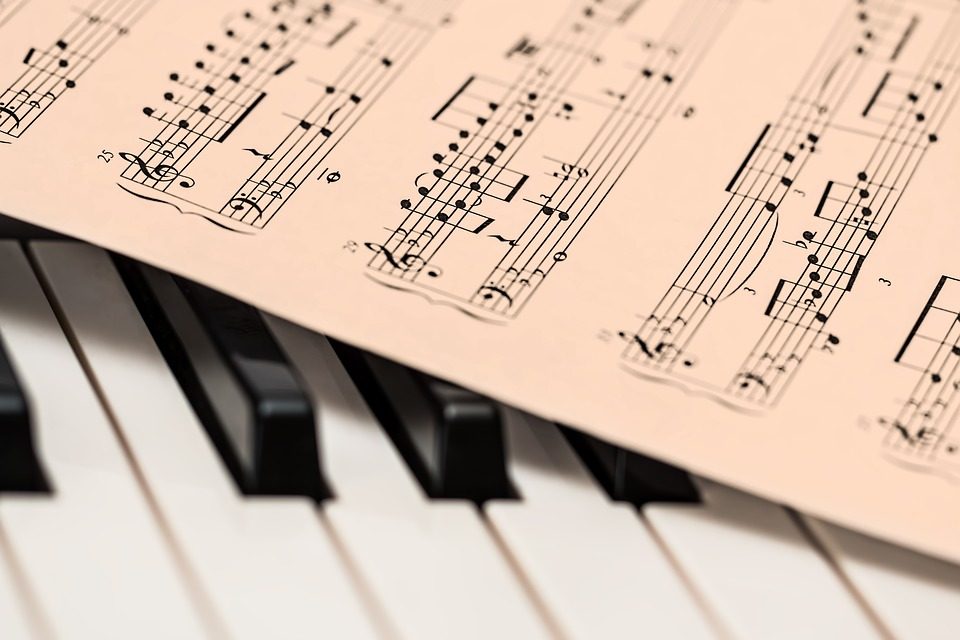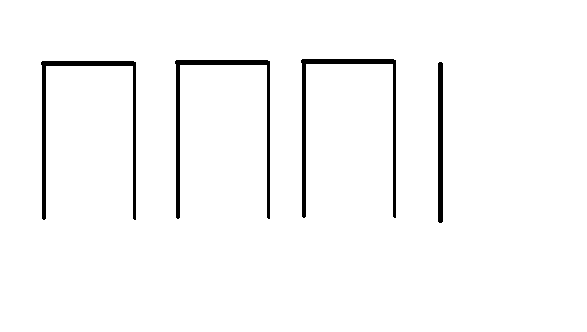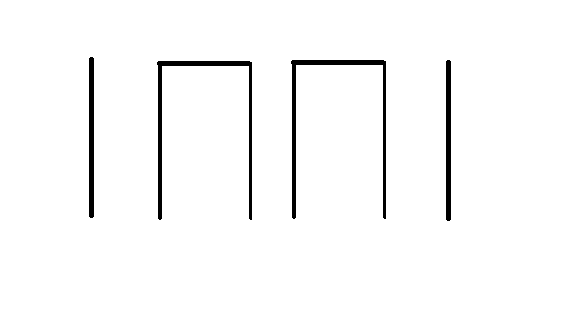This week has been another brilliant whirlwind!
One of the highlights was having the opportunity to watch and be a part of the Spring Concert on Wednesday evening. It was really great to see the talent and hard work of these young people as the various groups played a range of music – from classical pieces to contemporary pop.
Although I only played a very minor role (re-arranging chairs between sets – and doing it rather badly if I’m honest), I enjoyed being a part of the event.
During the week I have continued to be involved in Kodaly, African drumming, Samba band, Orchestra, Brass band, and Wind band. I have also been thinking about how I could use some of the methods and resources from these sessions in my own teaching. One activity which I particularly liked involved the written notation for rhythms (stick notation).
These notations can look like this (please excuse my poorly imitated versions):
or
In this activity, children were asked to play the rhythm on the flashcard, being careful not to play the rhythm of “don’t play this one back” (a familiar game). This involved the skills of reading and identifying the rhythms, as well as being able to play them.
After observing this lesson, I began thinking about the connections between music and maths. Musicians use maths all of the time when counting beats in a bar, and working out how long a note lasts for e.g. a minim or crotchet.
One possible activity on this topic could be to use the rhythm patterns (as shown above), and allowing the children to choose which rhythms they would use to fit into a bar. Bars could be varied in length, but would probably start with 4 beats.
For example, the children could create something like this:
This pattern would sound like this (played on my clarinet using just one repeated note):
An extension of this would be to create something more complicated also using semibreves, quavers and rests.
This activity can be seen on the following video (from around 0:04:30):
https://www.teachingchannel.org/videos/teaching-music-through-clapping
This activity could be extended as the children add the note heads to their rhythms, creating their own melodies.

Another way which music notation makes meaningful connections with maths is through fractions and times tables, i.e. if there are 4 beats in the bar, how can it be divided? How many lots of “tea” would fit or how many “coffee”s? I think that it’s important to apply maths in as many different ways as possible, so that children can grasp and understand it. Using music can help to add an element of fun to this learning (and maybe avoid the dreaded worksheets!)




